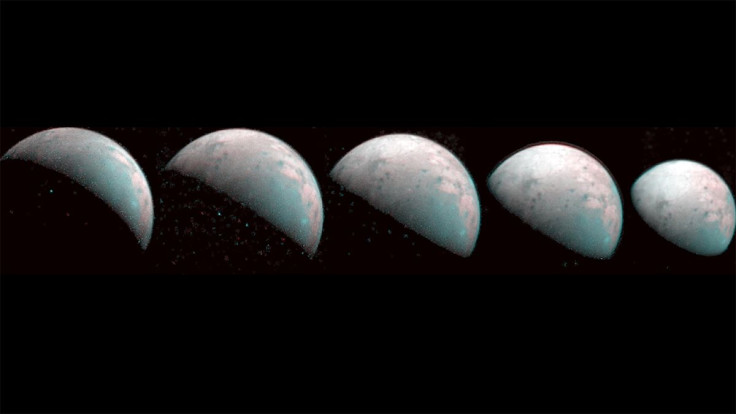NASA Juno Mission Shares First Hi-Res Photos Of Jupiter Moon Ganymede
KEY POINTS
- NASA's Juno spacecraft sent back its first-ever images of Ganymede, Jupiter's giant icy moon
- The two images were taken using Juno's JunoCam imager and Stellar Reference Unit
- The Juno space probe will allow scientists to learn more about the solar system's beginnings by studying Jupiter
Juno, NASA's orbiting space probe, has shared its first-ever images of Ganymede in all its icy glory.
On Monday, NASA's Juno spacecraft zipped by one of Jupiter's moons and sent two of its images back to Earth. The stunning photos featured the icy moon's surface in great detail, including its craters and terrains, NASA said in its statement published Wednesday.
Juno's flyby with Ganymede was one of the closest any spacecraft has ever reached in 20 years. During its closest approach, the space probe was able to get as close as 645 miles from the moon's surface.
“This is the closest any spacecraft has come to this mammoth moon in a generation,” said Juno Principal Investigator Scott Bolton of the Southwest Research Institute in San Antonio.
“We are going to take our time before we draw any scientific conclusions, but until then we can simply marvel at this celestial wonder.”
The striking images were taken using the spacecraft's special cameras, named the JunoCam imager and Stellar Reference Unit star camera. With the use of the JunoCam imager's green filter, the space probe was able to capture almost an entire side of Ganymede in remarkable detail.
As more images of Jupiter's moon return to Earth using the camera's blue and red filters, scientists will soon be able to provide a colored portrait of the giant moon.
Juno was able to catch the dark side of Ganymede thanks to its Stellar Reference Unit. The navigation camera is designed by experts to snap photos in low-light settings.
“The conditions in which we collected the dark side image of Ganymede were ideal for a low-light camera like our Stellar Reference Unit,” said Heidi Becker, Juno’s radiation monitoring lead at JPL.
“So this is a different part of the surface than seen by JunoCam in direct sunlight. It will be fun to see what the two teams can piece together.”
The space agency expects to receive more images from Juno in the coming days and will be sharing the raw images on the JunoCam site.
Since its launch in 2011, NASA's Juno spacecraft has been trying to find more information about Jupiter, particularly its origin and evolution. Specifically designed to look deep into the planet's atmosphere and structure, Juno will allow scientists to understand the solar system's beginnings.

© Copyright IBTimes 2024. All rights reserved.





















